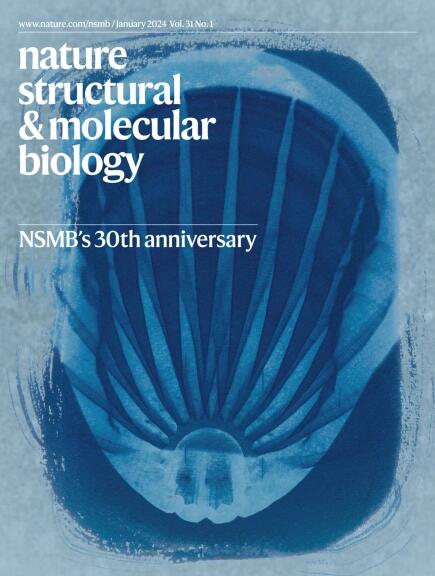Structural insights into transcriptional regulation by the helicase RECQL5
IF 10.1
1区 生物学
Q1 BIOCHEMISTRY & MOLECULAR BIOLOGY
引用次数: 0
Abstract
Transcription poses a major challenge for genome stability. The RECQL5 helicase helps safeguard genome integrity and is the only member of the human RecQ helicase family that directly binds to RNA polymerase II (Pol II) and affects its progression. While RECQL5 mitigates transcription stress in cells, the molecular mechanism underlying this phenomenon is unclear. Here, we use cryo-electron microscopy to determine the structures of stalled human Pol II elongation complexes (ECs) bound to RECQL5. Our structures reveal the molecular interactions stabilizing RECQL5 binding to the Pol II EC and highlight its role as a transcriptional roadblock. Additionally, we find that, in its nucleotide-free state, RECQL5 twists the downstream DNA in the EC and, upon nucleotide binding, undergoes a conformational change that allosterically induces Pol II toward a post-translocation state. We propose that this mechanism may help restart Pol II elongation and, therefore, contribute to reducing transcription stress. Florez Ariza and Lue et al. use cryo-electron microscopy to investigate how the RECQL5 helicase regulates transcription. Their structural findings suggest that RECQL5 can modulate RNA polymerase II’s translocation state, potentially restarting stalled transcription.


解旋酶RECQL5转录调控的结构见解
转录是对基因组稳定性的主要挑战。RECQL5解旋酶有助于保护基因组完整性,是人类RecQ解旋酶家族中唯一直接结合RNA聚合酶II (Pol II)并影响其进展的成员。虽然RECQL5可以减轻细胞中的转录应激,但这种现象的分子机制尚不清楚。在这里,我们使用低温电子显微镜来确定与RECQL5结合的停滞的人类Pol II延伸复合物(ECs)的结构。我们的结构揭示了稳定RECQL5与Pol II EC结合的分子相互作用,并突出了其作为转录障碍的作用。此外,我们发现,在无核苷酸状态下,RECQL5扭曲EC中的下游DNA,并在核苷酸结合后发生构象变化,变构诱导Pol II进入易位后状态。我们认为这种机制可能有助于重新启动Pol II延伸,因此有助于减少转录胁迫。
本文章由计算机程序翻译,如有差异,请以英文原文为准。
求助全文
约1分钟内获得全文
求助全文
来源期刊

Nature Structural & Molecular Biology
BIOCHEMISTRY & MOLECULAR BIOLOGY-BIOPHYSICS
CiteScore
22.00
自引率
1.80%
发文量
160
审稿时长
3-8 weeks
期刊介绍:
Nature Structural & Molecular Biology is a comprehensive platform that combines structural and molecular research. Our journal focuses on exploring the functional and mechanistic aspects of biological processes, emphasizing how molecular components collaborate to achieve a particular function. While structural data can shed light on these insights, our publication does not require them as a prerequisite.
 求助内容:
求助内容: 应助结果提醒方式:
应助结果提醒方式:


